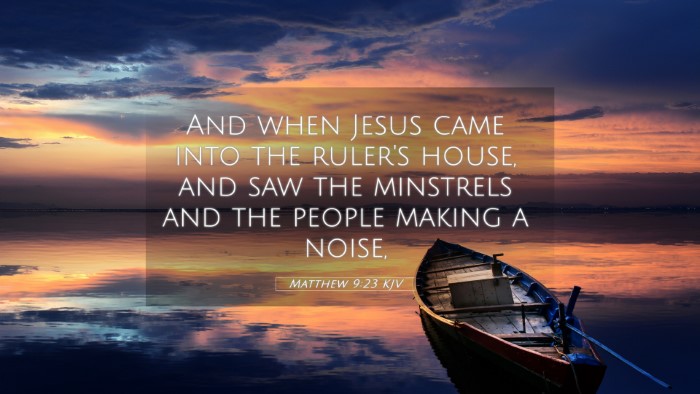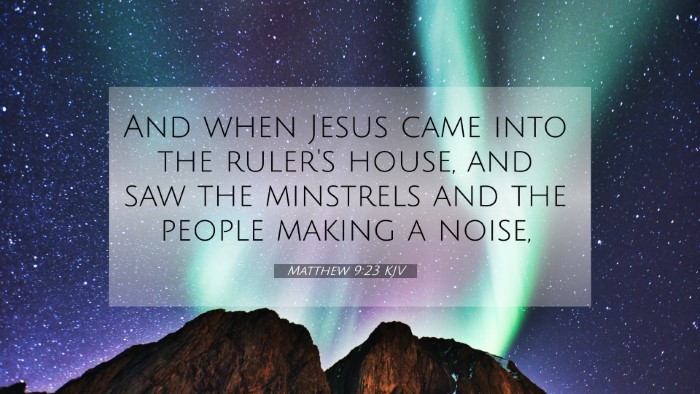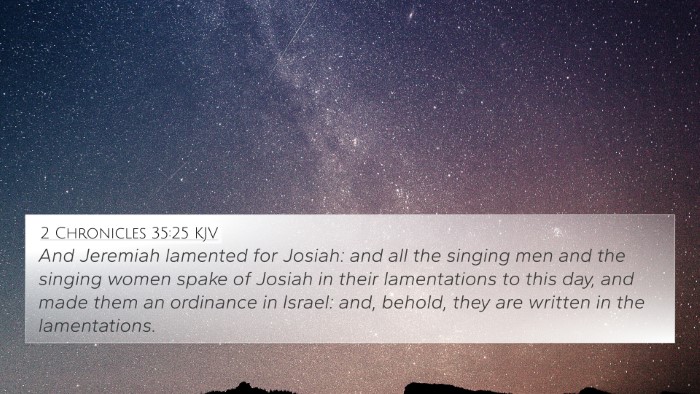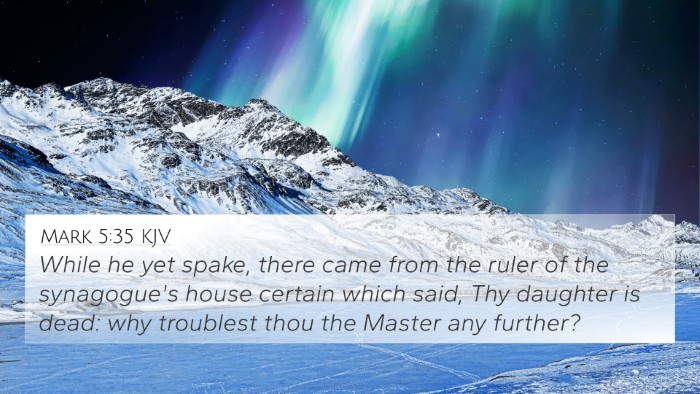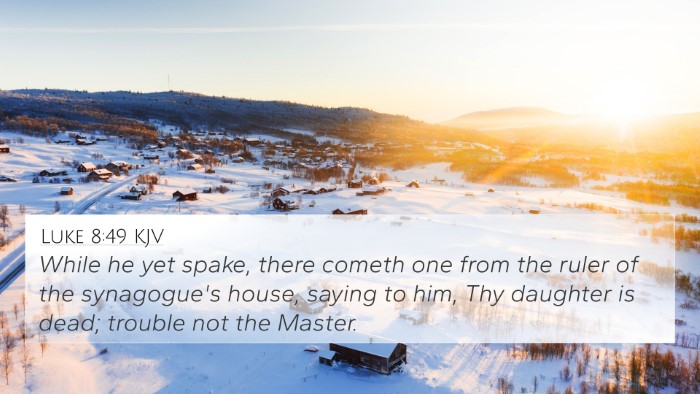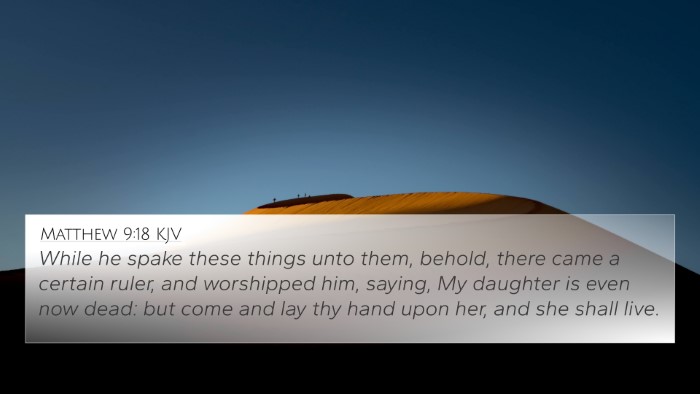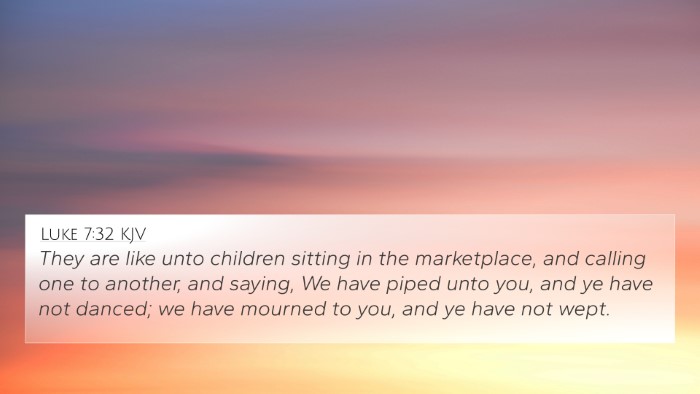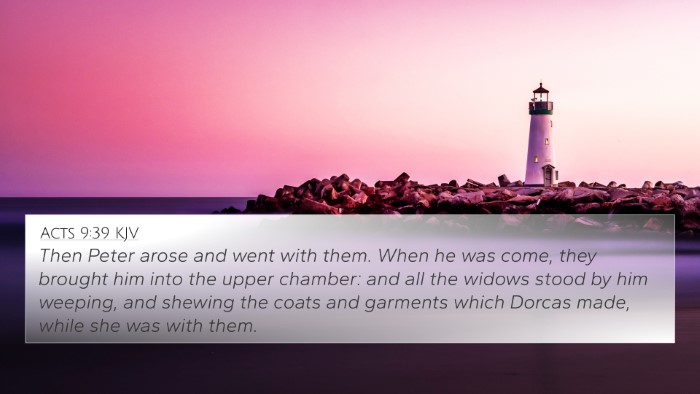Understanding Matthew 9:23
Matthew 9:23 states: "When Jesus came into the ruler’s house, and saw the minstrels and the people making a noise."
This verse occurs within the context of the healing of Jairus's daughter and conveys essential insights regarding faith, mourning, and the presence of Christ amid crisis.
Verse Context and Summary
In this narrative, Jesus has been summoned to heal the daughter of a synagogue ruler, Jairus, who is in a desperate situation. Upon His arrival, He encounters a scene of mourning, where the professional mourners are already making a loud commotion, signifying that the girl has died.
Commentary Insights
-
Matthew Henry:
Henry highlights the contrast between the joy of faith and the despair of the mourners. He emphasizes that when Christ enters a situation, His presence transforms despair into hope. The noisy lamentation indicates the finality of death, but Jesus represents the possibility of restoration.
-
Albert Barnes:
Barnes elaborates on the cultural practice of hiring mourners. He explains that this practice, while common, underscores the depth of sorrow in the situation. He notes that the noise signifies an acknowledgment of a lost life, yet when Jesus speaks, He commands the situation for a miraculous change.
-
Adam Clarke:
Clarke comments on the faith of Jairus juxtaposed with the doubt of the mourners. He explains that the noise symbolizes the absence of faith, whereas the faith displayed by Jairus signifies a belief in resurrection and healing. The presence of Jesus challenges the perception of death as the final word.
Thematic Connections
This verse can be linked to various themes within the Bible, such as the authority of Jesus over death and the importance of faith in His ability to restore life. Below are some key cross-references that enhance the understanding of Matthew 9:23:
- John 11:25-26: Jesus asserts His role as the resurrection and the life, reinforcing the belief in eternal life through Him.
- Luke 8:52-55: Details the same event, emphasizing the command of Jesus, "Do not weep; she is not dead but sleeping."
- Mark 5:38-40: Mark's account adds depth to the scenario, showcasing the ridicule faced by Jesus amidst the mourners.
- Romans 8:11: An exploration of the resurrection power available through the Spirit of God, aligning with the theme of life over death.
- 1 Thessalonians 4:13-14: Encouragement about the resurrection of believers, connecting believers to the hope found in Christ.
- Revelation 21:4: A promise that God will wipe away all tears and eliminate death, linking to the promise of hope and restoration.
- Hebrews 4:14-16: Jesus as a High Priest who sympathizes with our weaknesses, indicating His compassion in times of sorrow and need.
Applications and Takeaways
For believers today, Matthew 9:23 serves as a poignant reminder of Jesus' power over life and death and His presence in times of distress. The response of the mourners juxtaposed with Jairus's faith illustrates contrasting beliefs about Jesus' authority and ability.
Key takeaways include:
- The necessity of faith in the face of despair; Jairus was a man of faith amid a crowd of mourners.
- The transformational presence of Jesus brings hope even in dire circumstances.
- The response of Christ to human trouble signifies His willingness to engage with our suffering.
- Understanding that physical death is not the end, and that Jesus provides a promise of life beyond death.
Conclusion
As we contemplate Matthew 9:23, we recognize the profound implications of Jesus’ authority and the invitation to trust in Him amidst life’s trials. Through scriptural cross-referencing and comparative Bible verse analysis, we comprehend the unity and richness of the biblical narrative surrounding life, death, and resurrection.

